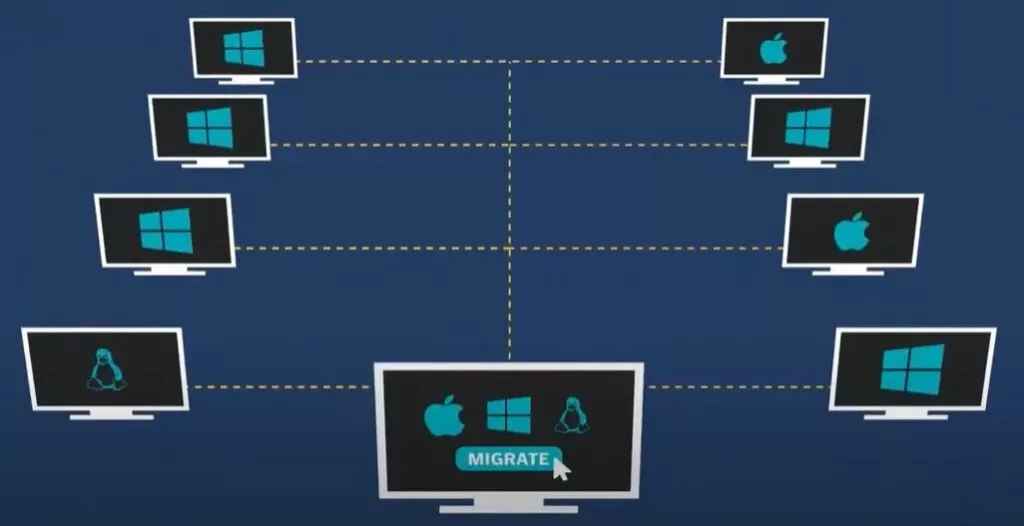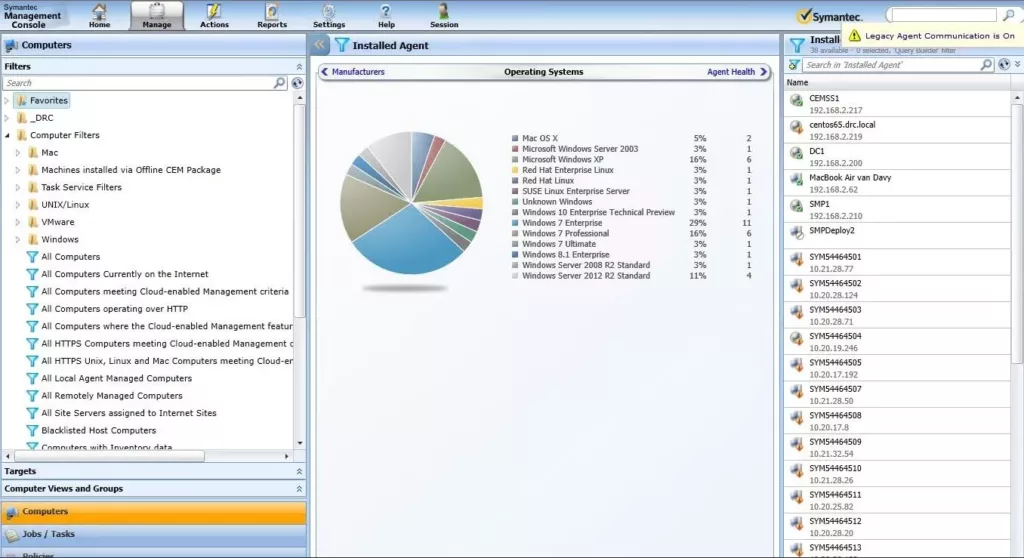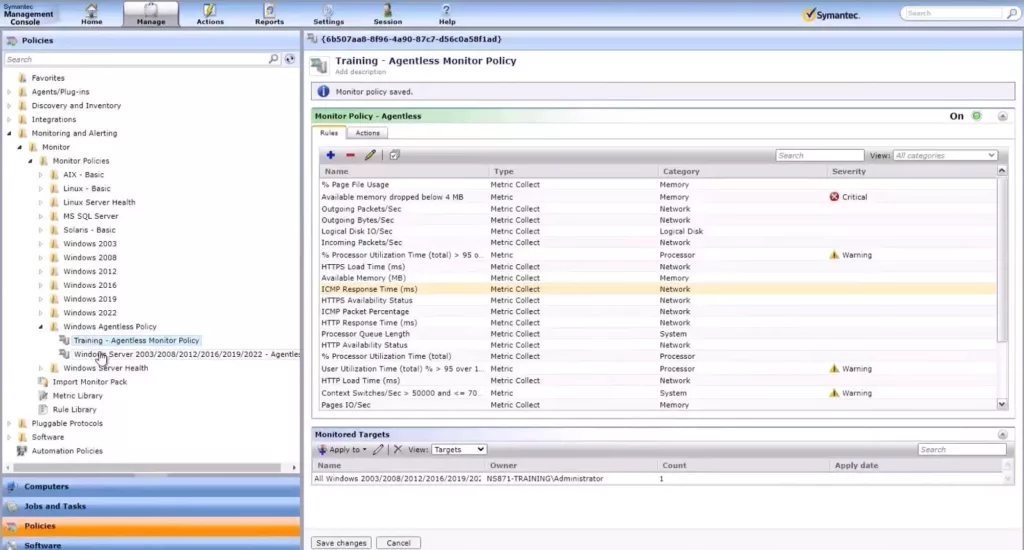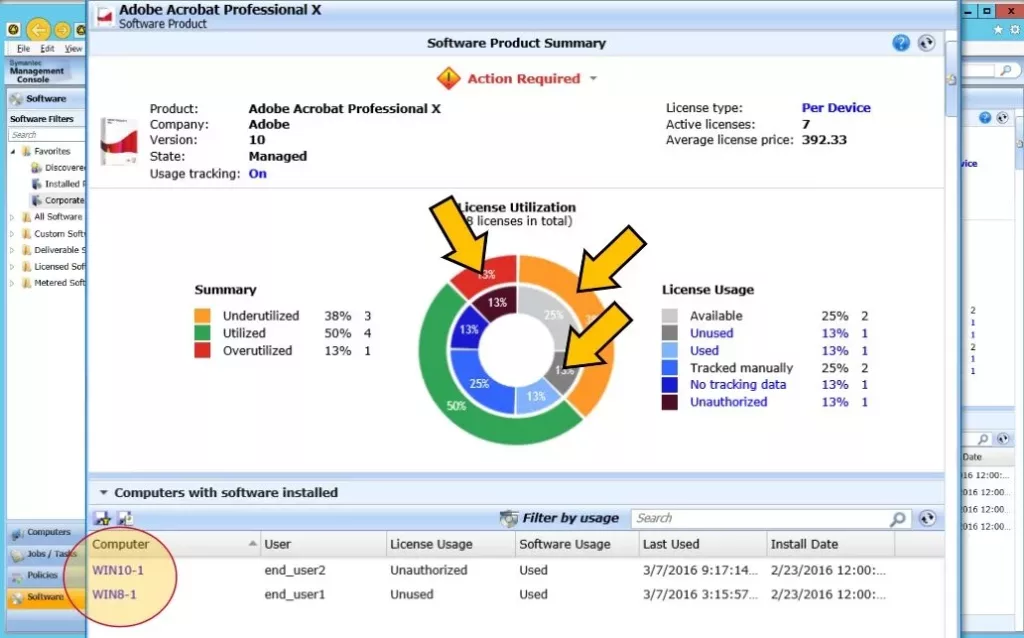Endpoint Management Suites

Symantec IT Management Suite
Many successful attacks exploit known vulnerabilities simply because endpoints are improperly configured or unpatched. A significant factor behind this issue is the lack of real-time visibility of the state and usage of an organization’s endpoints and software. Symantec® IT Management Suite (ITMS) helps organizations overcome this challenge by providing robust endpoint management, security, and automation capabilities.
The versatility of ITMS lies in its powerful, real-time management and patching capabilities, which enhance security posture and maximize end-user productivity.
ITMS integrates the capabilities of Symantec Asset Management, Symantec Client Management, and Symantec Server Management into one comprehensive solution, offering end-to-end IT asset and security management.

Symantec Ghost Solution Suite
In a world in which work-from-home is becoming the norm, the imaging and deployment process is even more critical to organizations who are trying to keep employees productive and IT costs under control. When users are in the office, it is relatively easy for IT to provision a new laptop for them, reimage their machine, or migrate their data to a new laptop. However, with the rapid expansion of remote workers, new devices are frequently shipped from a central location and re-imaging must be done remotely to minimize user down time.
Symantec® GHOST Solution Suite (GSS) includes core features designed to addresses the key challenges associated with the endpoint management lifecycle:
- Centralized management console
- Image and deploy systems
- Inventory and asset management
- Delegated administration model
With these core features, GSS enables IT administrators and technicians to accelerate and simplify imaging, deployment, and other key aspects of managing end user devices and servers throughout their lifecycle.

Symantec Client Management Suite
Organizations are implementing stronger authentication mechanisms to help positively distinguish legitimate users from fraudulent ones, but what about their devices? One of the tenets of Zero Trust is to verify every identity and device requesting access. External attackers continue to target end users and their devices, with the most successful attacks exploiting known vulnerabilities simply because endpoints were not properly configured or patched. These weaknesses exist because many organizations lack real-time visibility into the state and use of their own endpoints and software. Symantec® Client Management Suite (CMS) addresses this challenge through the following four key features:
- Patch Management: Symantec CMS centralizes and simplifies the detection and remediation of security vulnerabilities by automating the deployment and application of patches.
- Deployment, Provisioning, and Migration: Symantec CMS provides a comprehensive solution for deploying and managing desktops, laptops, and physical and virtual servers.
- Modern Device Management: Symantec CMS simplifies the process of managing devices by leveraging protocols built into the operating system rather than an agent.
- End User Self-Service: Symantec CMS enables users to request and install software through a modern software portal that provides an appstore experience.
Symantec CMS gives you an accurate picture of your organization’s assets with three core features: it ensures compliance during software audits, it uncovers savings by eliminating the purchase of unnecessary licenses, and it enables you to avoid vendor penalties and fines.

Symantec Server Management Suite
The IT environment is more complex and more dynamic than ever before. Servers are being deployed in minutes to support continuous and agile development processes. For many administrators, this means making sense of thousands of moving parts to ensure servers are being provisioned, patched and managed quickly without disrupting the business. This requires IT to have immediate intelligence on what is happening in their environment and the ability to take instant action to ensure servers are both available and protected.
The key capabilities of Symantec® Server Management Suite (SMS) help strengthen server security and maximize user productivity. SMS addresses this challenge through four key features:
- Patch Management. SMS centralizes and simplifies the detection and remediation of security vulnerabilities by automating the deployment and application of patches.
- Discovery and Inventory. The SMS network discovery and inventory tools automatically collect server information and populate it to a Configuration Management Database (CMDB).
- Deployment, Provisioning, and Migration. SMS provides a comprehensive solution for deploying and managing physical and virtual servers.
- Integrated Monitoring. SMS provides lightweight server health monitoring and integrated remediation tasks to streamline server troubleshooting.
With these core features, SMS alleviates and streamlines many of the day-to-day operational challenges of server management, and enables you to protect your applications and data with minimal service disruptions.

Symantec Asset Management Suite
In a world with a wider range of software applications and rapid expansion of remote workers, asset management is becoming more critical to organizations trying to control IT costs. Are you prepared for the next vendor-initiated software audit? Are you optimizing your software licenses, or are you paying for software that is installed on machines but not being used? Organizations can often reclaim unused licenses and either redeploy where needed or reduce the number of licenses when renewing their maintenance. Additionally, organizations also struggle with compliance audits because they do not have an accurate picture of their assets.
Symantec® Asset Management Suite (AMS) addresses this challenge through the following three key features:
- Configuration Management Database (CMDB): Once hardware and software assets have been discovered and inventoried, either by one of our complementary products within the Endpoint Management portfolio or a third-party product, AMS can correlate that data with contracts, software license information, and so on. Information about these assets is stored in the CMDB, which manages the relationships between these assets and other configuration items, users, locations, departments, cost centers, and associated contracts.
- Contract Management: AMS minimizes the burden of managing vendor contracts related to hardware warranties and leases, as well as software maintenance and support agreements. The integration of contract and financial cost data enables you to effectively forecast hardware and software needs, while avoiding penalties and late fees.
- Software License Management: AMS also provides robust software license management capabilities that not only support per device and per user license models, including site-based and enterprise definitions, but also support per CPU and per processor models often used for server applications.
With these three core features, AMS gives you an accurate picture of your organization’s assets; ensures compliance during software audits; uncovers savings by eliminating the purchase of unnecessary licenses; and enables you to avoid vendor penalties and fines.
